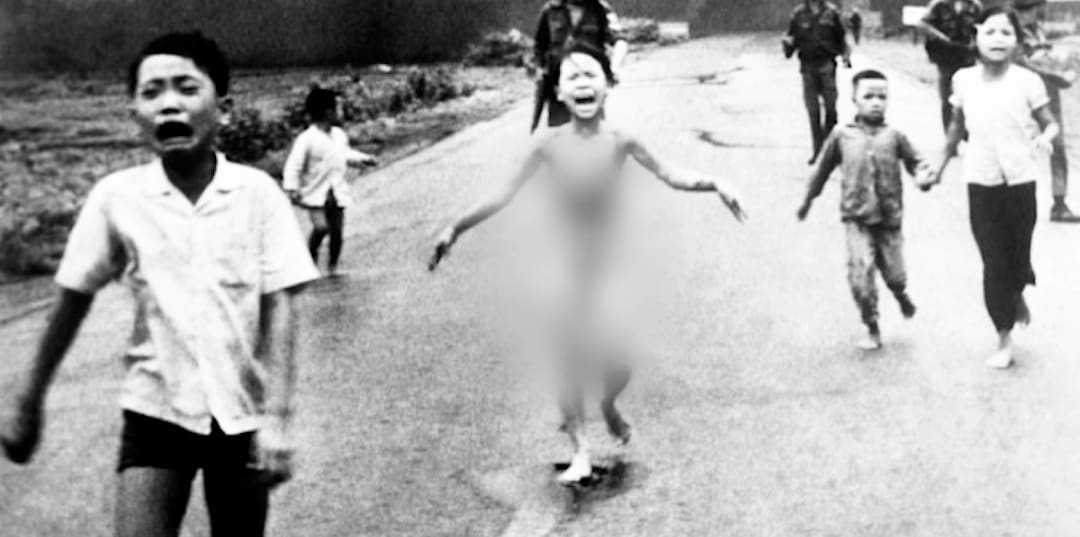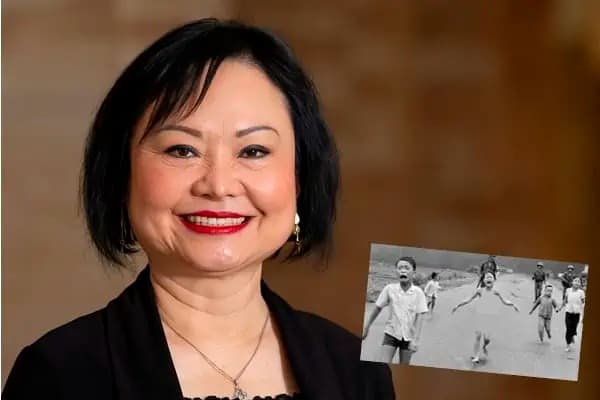Ajax resident, former ‘Napalm Girl,’ turns haunting Vietnam War photo into symbol of humanitarian aid
Published August 23, 2022 at 3:19 pm

Being depicted in one of the most famous photographs in history can be a blessing and a curse.
For Phan Thi Kim Phuc, being known as the ‘Napalm Girl,’ the nine year-old South Vietnamese child depicted in the Pulitzer Prize-winning photograph by Nick Ut, running naked on a road, her cloths having burned off her body after a South Vietnamese napalm attack, it was the latter.
“As a famous person from that photo, I couldn’t go to school. I lost my freedom, I lost my ambition and my hope. Many times I thought of suicide,” Kim Phuc – now safely ensconced in her Ajax home, remembered. “I kept asking why me? Why didn’t I die? Why am I suffering now?”
Phuc would eventually return to school but that photograph, titled ‘The Terror of War’ and taken at Trang Bang on June 8, 1972 during the Vietnam War, would come back to haunt her once again.
During her first year of medical studies in 1982 her story became “hot news” again and Kim Phuc was removed from university to become a propaganda symbol for the Communist regime.
“I was re-discovered and journalists came and wanted to interview me and it interfered with school,” she said. “Again I said ‘why me?’ I was so lonely because I couldn’t go to school anymore. I became a victim of war again.”
Her salvation turned out to be faith. She became a voracious reader in the university library and the New Testament became her favourite book. Kim Phuc he soon converted to Christianity.
The conversion was “very difficult,” because she had been a devout follower of the Cao Dai religion and also because being a Christian – an ‘American’ religion – was frowned upon in 1980s Vietnam. But she learned to forgive, a trait she carries with her to this day.

“Four napalm bombs almost killed me but I didn’t die,” she said. “But I remember the hopelessness and I remember seeking out, looking for answers for my purpose in life. And I learned God wasn’t finished with me yet.”
Four years later she was granted permission to continue her studies in Cuba after Vietnamese Prime Minister Pham Van Dong became her friend and patron. In 1987 she met Bui Huy Toan, another Vietnamese student and after a five year romance they were married.
The newlyweds went to Moscow for their honeymoon and on the way back, at a one-hour re-fuelling stop in Gander, Newfoundland, they walked off the plane and never looked back.
“In that hour I made a decision: I’m not going back and I am so thankful Canada accepted us.”
The couple first settled in Toronto before moving to Ajax in 1997, the same year she started the Kim Foundation International to provide aid to child victims of war.
“I knew in my heart I wanted to be a doctor but I still keep that dream alive by helping others,” she said. “Our mission is to be a partnership to build hospitals and schools and libraries for children.”
The famous snapshot, which was named World Press Photo of the Year in 1973, was initially denied as a hoax by President Richard Nixon, and there were enough Americans who believed him that Nixon – still two years away from his downfall at Watergate – would be re-elected in November, prolonging the carnage in Vietnam for another year.
For young Phan Thi Kim Phúc, the picture was a painful reminder of a four-month stay in hospital and 17 surgical procedures before she was able to live a normal life, as normal as it could be being a ‘celebrity’ in post-war Vietnam.
“That photograph had a huge impact on my life but it had a huge impact on (Ut) as well,” she said. “It really changed his life.”

Kim Phuc and photographer Nick Ut
Kim Phuc recently returned from Poland where she helped 236 Ukrainian refugees – along with plenty of children – come to Canada aboard a special flight from Warsaw to Regina. The airplane used for the mission is owned by Ut – who she speaks with weekly – and bore an image of her iconic 1972 photo with the words ‘No War’ written on it.
“Now I’m not running with my picture, I’m flying with that picture,” Kim Phuc said, smiling. “That picture was a burden in Vietnam but now it’s helping people.”
Kim Phúc, who was made a member of the Order of Ontario in 2004 and was awarded the Dresden Peace Prize in 2019, said helping people through her foundation makes all the suffering she has endured worthwhile.
“Seeing those people, those children, it brought tears to my eyes,” she said of the July rescue mission to Poland. “I’ve been there. The war destroyed my body, my village. I felt so much for them and that’s 50 years ago.”
“Thirty years ago I was a refugee myself, so I’m thankful I was able to give them hope. I tell them, ‘don’t give up hope.’ They were so happy, so thankful. It was so emotional and a wonderful moment for all of us.”
INdurham's Editorial Standards and Policies




